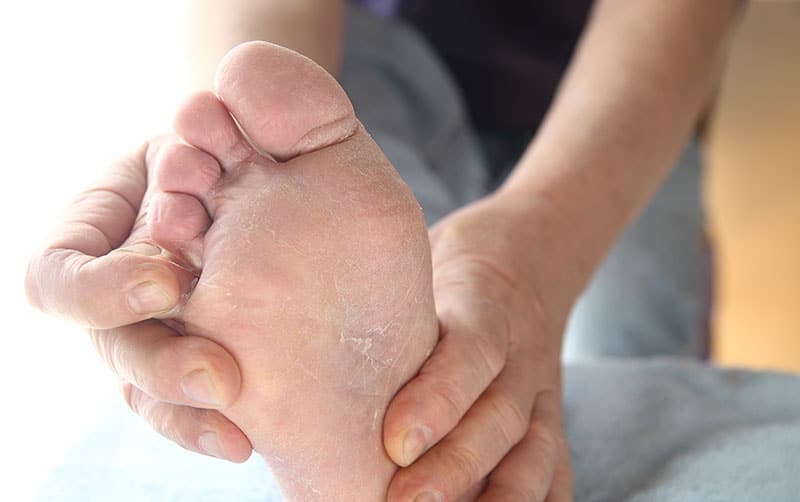Athlete’s Foot – Symptoms & Causes

The potential for contracting athlete’s foot, is so immense because of it contagious properties, that I never take showers at the gym without those rubber flip flops. I always make sure that I have something on my feet when I am in a place that I either don’t know or showering in a place I don’t know, like the gym or the spa. But where does it come from? What is it exactly? Read on to find out.
What is it?
It’s a fungal infection that generally attacks the feet only. However, it can be transferred to toenails and even hands because of how contagious it is. The most likely cause is being barefoot in public places. Any public place, however public bathroom facilities seem to harbor it making it the most likely place to contact the infection. It’s not going to cause you to lose a toe or a foot (although it may feel like that way) but it’s relatively harmless, with the exception of diabetics where that could cause serious issues and complications. You increase your risks by going barefoot anywhere other than your home, ill fitted should, and sharing of bathroom linens (just don’t anyway). There are many surfaces that will hold onto it, and continue research in the field.
How do you Get It?
Does a warm, most environment appeal to you? Well if it does, than have fun traveling the world or whatever it is that you want to do. But it’s also a place that is a breeding ground for athletes’ foot. The surface can become contaminated and thereby the infection is spread if you are doing everything barefoot.
What are the Symptoms?
You’ll know if you have it. Some of the most common symptoms would be itching, stinging and burning between the toes or on the soles of the feet (can you say painful), itchy blisters, cracked and peeling skin generally in between the toes, dry and/or raw skin on the soles of the feet, discolored or thick and crumbly toenails, and losing toenails. These are the basic symptoms of athlete’s foot. In reality if your feet are uncomfortable and you know you have being walking around and not protecting them, this may be what you have.
How can I Treat It?
Treatment isn’t really that difficult. Like any other skin issue, there is a cream for that. Generally most doctor’s or even just people before they see them, will try a topical over the counter medication to help their feet heal. If that doesn’t work they will contact their doctor who will give a prescription strength medication which can either be topical, and oral antifungal, or antibiotics. This is all dependent on how bad the case is and what has worked, or not worked, beforehand. Taking the steps to keep your feet dry and protected should always be the first step in preventing this fungal infection, always wear flip flops and keep those feet dry and comfortable.








